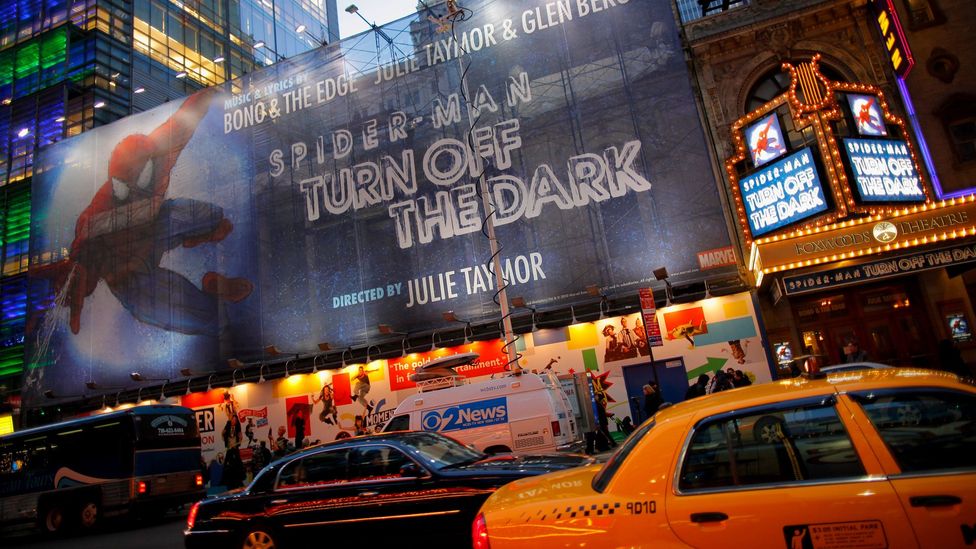But everything was going relatively smoothly until the last seconds before the interval. “Then there was a flourish,” says Berger, “when Spider-Man flies off through the audience towards the balcony. And for some reason he stopped, so you had Spider-Man dangling seven feet above the first two rows. It was the worst possible position because no one could reach him. One of the crew members fetched a stick to prod him with, but that didn’t help. It was like a live Spider-Man pinata. But we knew by the end of the night, well, that’s the worst it’s ever going to be. We’ll keep improving it and improving it, and it’s going to be duck soup by the time we open in January.”
It didn’t work out like that. Before the first preview, Turn Off the Dark was already being gossiped about as a ‘troubled’ enterprise. Its initial lead producer and guiding light, Tony Adams, had had a fatal stroke in 2005 while in a meeting with The Edge. And the financial crisis of 2007 and 2008 had scared off private investors, so that in August 2009, the production found itself $20 million short of cash. But the bad luck didn’t end there. In the months that followed the first preview, the official opening was repeatedly postponed while Berger and his colleagues dealt with bruising, embargo-defying reviews, sackings, injuries, and countless technical snags.
By May 2011, Turn Off the Dark had become so synonymous with theatrical disaster that a headline in The Onion, the satirical newspaper, appeared to be only slightly exaggerating: “Nuclear Bomb Detonates During Rehearsal for ‘Spider-Man’ Musical”. The show did finally have its opening night in June 2011, but by then its fate had effectively been sealed: and though its run continued for another two-and-a-half years, when it closed in January 2014 it had made a loss of $60 million – a Broadway record. A sure-fire hit had become a legendary debacle. “I’m philosophical about all of it,” says Berger. “It might end up in my obituary, and I’m not too happy about that. But I’d rather have Spider-Man on my resume than the Iraq War.”
A written post-mortem
Berger went on to write a candid memoir, Song of Spider-Man, which grips like a murder mystery novel: as you read it, you scan the pages for clues that might account for the bloodbath. There are several right at the start of the story. The musical was announced in the summer of 2002 to capitalise on the success of Sam Raimi’s first Spider-Man film. Bono and The Edge signed up soon afterwards, but when the producers approached Taymor, she replied that she would take the job only if she “could find a narrative something to spark her imagination”.
That something was the Greek myth of Arachne, a woman who beat Athena in a weaving contest, and was transformed into a spider by the jealous goddess. Avi Arad, Marvel’s chief creative officer, objected: Arachne had nothing to do with Spider-Man, and her inclusion as a major character would be “entirely wrong”. Taymor stood her ground. So what if her concepts were gloomier, more sexualised, and, yes, more pretentious than Stan Lee and Steve Ditko’s comics or Raimi’s films? Her greatest triumphs came from her refusal to compromise. “If Arachne’s out,” she said, “then I’m out.”





